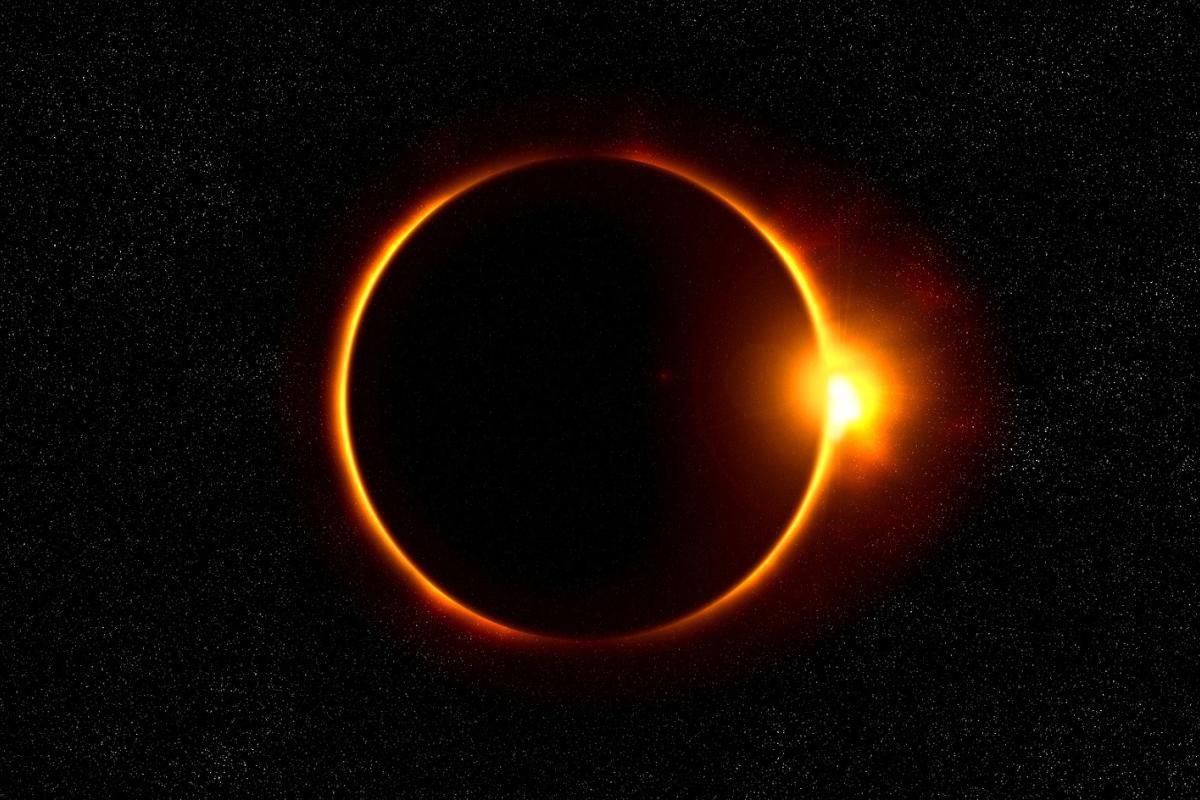Hybrid Eclipse Explained - What It Looks Like & How to See It


The hybrid eclipse is a fascinating celestial phenomenon that goes beyond its visual allure. During this event, the Moon and Sun exhibit a unique interplay, showcasing both an "annular ring" and, in certain locations, a brief moment of "total darkness." Apart from its captivating appearance, the hybrid eclipse holds scientific value, offering a glimpse into the precise choreography of the solar system and highlighting the delicate balance necessary for such an occurrence.
The following article by thedailyECO explains what a hybrid eclipse is and offers tips on how to observe it.
What is a hybrid solar eclipse?
A hybrid solar eclipse is a fascinating celestial occurrence that takes place when the Moon passes between the Earth and the Sun. This creates the possibility of both a total eclipse and an annular eclipse from different vantage points on Earth's surface. Essentially, during a hybrid solar eclipse, observers may experience a total eclipse in some regions and an annular eclipse in others, depending on their geographic location in relation to the eclipse's path.
This unique event is a result of variations in the Earth-Moon distance and the relative sizes of their cast shadows. The Moon's elliptical orbit around the Earth leads to fluctuations in its distance, with the closest point (perigee) allowing its cast shadow to reach Earth's surface, resulting in a total eclipse. Conversely, when the Moon is at its farthest point (apogee), its shadow may not fully reach the surface, causing an annular eclipse.
The hybrid solar eclipse unfolds in the transition zone between the umbra (the Moon's darkest shadow) and the penumbra (a fainter region surrounding the umbra). This transition zone, called the eclipse center line, is where the viewing experience can shift from total to annular, contingent on the observer's specific location.
This phenomenon is relatively uncommon, since not all solar eclipses exhibit the necessary conditions for a hybrid solar eclipse to take place. Astronomers and enthusiasts eagerly anticipate these rare events, as they provide a unique opportunity to witness and study two distinct types of solar eclipses in a single event.
Unravel the mysteries of gravity and its role in shaping the movements of celestial bodies in this other article.

How to see a hybrid solar eclipse
Watching a hybrid solar eclipse can be challenging, but with some preparation and knowledge about the location and viewing conditions, it becomes an enjoyable experience.
Before the event, make sure you know the exact path of the hybrid solar eclipse to determine if you're in a good location for optimal viewing. Online tools and mobile apps provide maps and predictions about the eclipse's visibility in different regions.
Remember that looking directly at the Sun, even during an eclipse, can harm your eyes. It's essential to use special solar filters like certified eclipse glasses, solar filters for telescopes or cameras, or solar viewers to protect your eyes.
While a hybrid solar eclipse is visible without aids, using binoculars or telescopes can enhance the experience. Ensure you have the right equipment and practice using it beforehand to make the most of the eclipse.
Choosing an open viewing location, like hills or low mountains, can improve the eclipse experience. Keep an eye on the weather and make sure the sky is clear for better viewing.
Capturing the hybrid solar eclipse through photos or recordings is a great idea for lasting memories. Use suitable photography equipment with solar filters for cameras and practice your camera settings before the event to get good results without overwhelming yourself with too many photos.
Differences between a hybrid, total, partial and annular solar eclipse
Solar eclipses manifest in four primary categories, each distinguished by unique visibility and visual characteristics. Explore the types of eclipses below:
Total solar eclipse:
Occurs when the Moon entirely covers the Sun's disk, obstructing all direct sunlight. Earth is immersed in the Moon's penumbra and umbra, resulting in complete darkness. The solar corona, the Sun's outer atmosphere, becomes visible around the lunar edge. Limited to a narrow strip on Earth's surface; those outside the band witness a partial eclipse.
Partial solar eclipse:
Moon covers a portion of the solar disk, casting a partial shadow on Earth. Sun appears with a portion seemingly bitten off at its edge. More common and observable from a wide geographic area, with the extent of coverage varying based on the observer's location.
Annular solar eclipse:
Occurs when the Moon is farthest from Earth, and its apparent size doesn't fully cover the solar disk, creating a ring of light. Sun appears as a bright ring around the darkened Moon. Limited to a specific region, observable by those within the path of the Moon's shadow.
Hybrid solar eclipse:
Transitions between a total eclipse and an annular eclipse along its path. Variability in Earth-Moon distance and shadow dimensions leads to regions experiencing either a total or annular eclipse. More restricted compared to typical total or annular eclipses, occurring in a narrow strip on Earth.
Curious about other eclipse types? Explore the full range of solar and lunar eclipses in our other article.

Upcoming hybrid eclipses
While hybrid eclipses are rare, there are a few exciting opportunities to witness this celestial phenomenon in the coming years:
- November 14, 2031: The next hybrid eclipse will occur across parts of North America, North/West South America, the Pacific, and the Atlantic. Observers in the path of totality will experience a brief moment of darkness, while others will see the stunning "ring of fire" effect.
- April 8, 2044: Another hybrid eclipse will traverse a path across Central and South America, offering breathtaking views to observers in countries like Mexico, Guatemala, and Venezuela.
- May 29, 2053: This hybrid eclipse will take place over the Pacific Ocean, with a partial view potentially visible from parts of Asia and North America.
- December 22, 2062: The path of this hybrid eclipse will cross Africa and Europe, providing a rare opportunity for observers in these regions to witness this celestial event.
How can we predict eclipses in the future?
Predicting eclipses, both hybrid and other types, relies on a fascinating blend of:
- Centuries of observations reveal repeating patterns, like the 18-year cycle for solar eclipses.
- Powerful simulations and space data refine our predictions for years to come.
This blend of science, history, and technology lets us accurately forecast these celestial shows. Want to delve deeper into the cosmos beyond the hybrid eclipse? Expand your knowledge of celestial bodies in our other article.
If you want to read similar articles to Hybrid Eclipse Explained - What It Looks Like & How to See It, we recommend you visit our Facts about Earth and the universe category.







